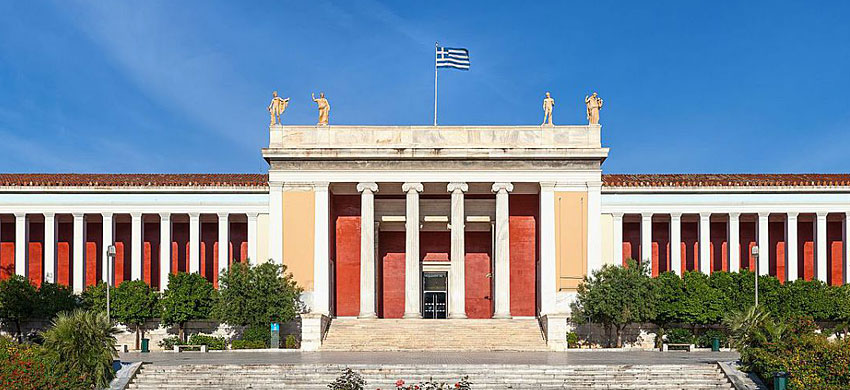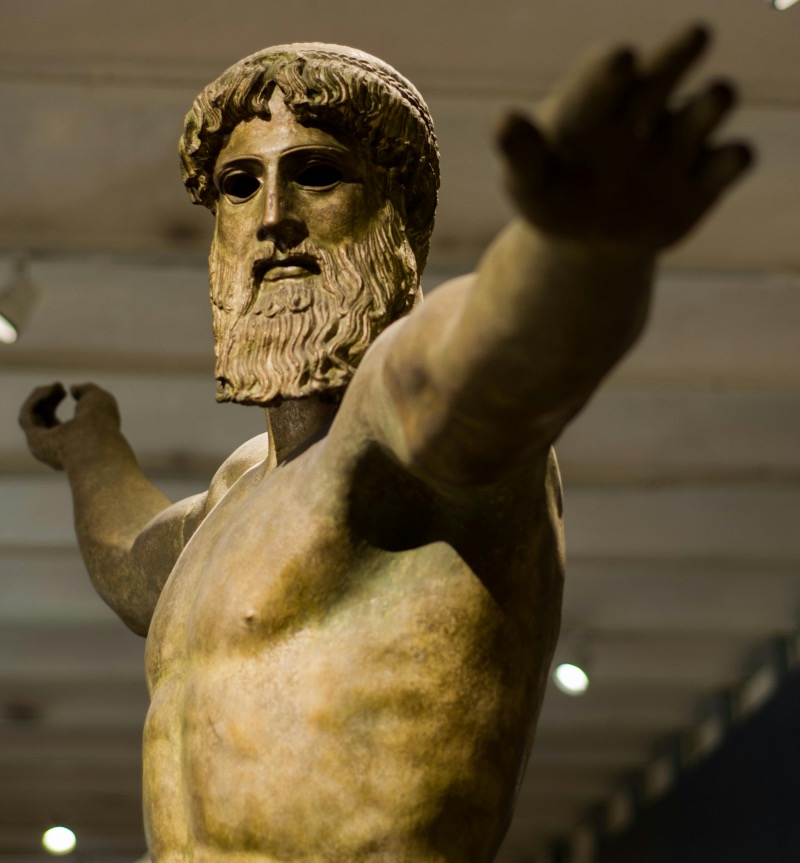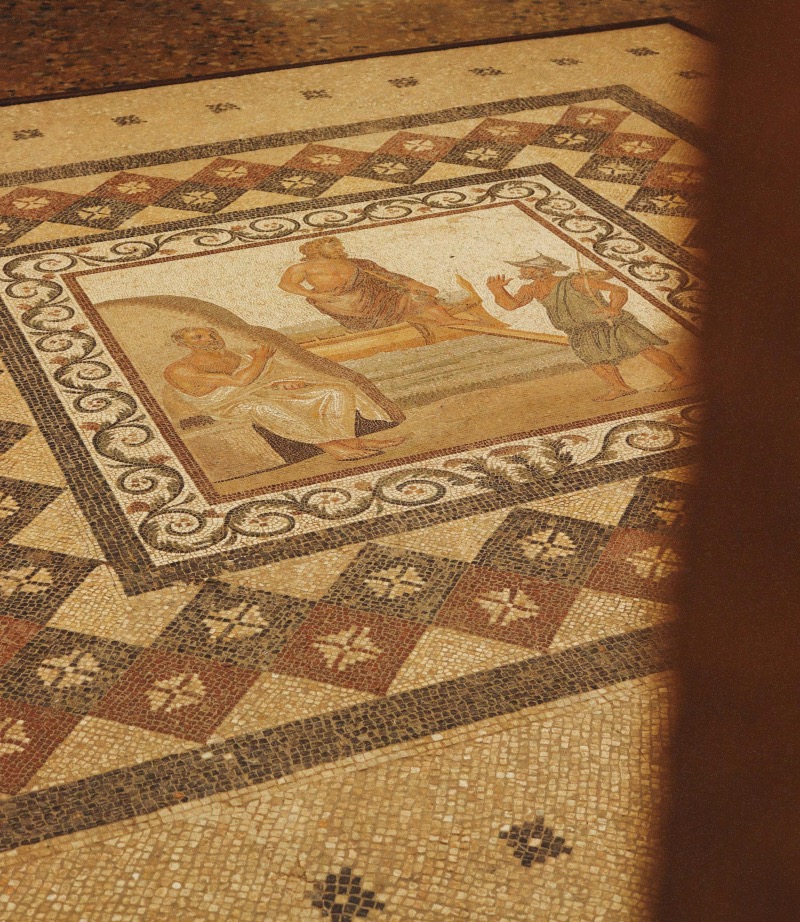
Athens is a must for lovers of archaeology and ancient history. Not only museums, but also open-air archaeological sites, everywhere you can breathe in the past. One of these is the National Archaeological Museum of Athens, where you can find works that we have all, at one time or another, seen in history books.
What to find at the National Archaeological Museum in Athens

Statua di Zeus o Poseidone al Museo Archeologico di Atene
The National Archaeological Museum in Athens is divided into several collections covering various civilisations and historical periods. You will find, for example, an extensive prehistoric section, with exhibits ranging from the Neolithic to the Bronze Age, and the sculpture collection, which includes works from the 7th century B.C. to the 5th century A.D., offering a comprehensive overview of Greek artistic evolution.
There is also a section dedicated to metals, including weapons, tools and jewellery, and a Mycenaean collection with precious artefacts of the ancient civilisation. Female sculptures or ‘korai’, Roman and Egyptian vases and remains complete the museum’s offerings. A complete visit takes several hours, so it is advisable to take your time or select in advance a tour with the works that interest you most.
Works to see at the National Archaeological Museum in Athens
The National Archaeological Museum in Athens houses some of the most famous and fascinating works of antiquity. Here are some of the most unmissable:
- Mask of Agamemnon: discovered by the archaeologist Heinrich Schliemann, this golden funerary mask dates from the Mycenaean age and is one of the museum’s most iconic exhibits.
- Jockey of Cape Artemisius: this bronze statue depicts a young jockey on a horse and dates from the 2nd century BC. It is one of the few bronze equestrian statues to have survived.
- bust of the Minotaur, representing one of the most famous mythological figures.
- bronze statue of Zeus or Poseidon: found in the sea near Capo Artemisio, this imposing statue represents one of the two deities in the act of throwing a thunderbolt or trident. It is a perfect example of Greek art of the severe age.
Tickets for the National Archaeological Museum in Athens
To avoid long queues at the ticket office, it is advisable to buy tickets for the Athens Archaeological Museum online. The ticket is received by email and includes an audio-guided tour that you can listen to directly on your smartphone; just bring your earphones with you. This type of ticket cannot be cancelled, so plan your visit carefully.
There is also a combined ticket with the Acropolis Museum. This ticket also gives you an audio guide for the city of Athens, making your tour even richer and more complete. Be careful when purchasing: this option does not include entry to the Acropolis of Athens and the Parthenon, for which you must purchase a separate ticket.

Where is the National Archaeological Museum in Athens and how to get there
The National Archaeological Museum of Athens is located at Patission 44, in the district of Exarchia, a central and lively part of the city. The museum is easily accessible from the city centre and is close to other cultural attractions. You can get there by taking the metro (Line 1, stop ‘Victoria’) or various buses serving the area. Its proximity to Omonia Square and Larissa Station also makes it accessible on foot from many central areas of Athens.
If you want to visit more attractions in Athens, know that there is a pass that includes access to the Acropolis and its museum, as well as several other archaeological sites such as the Ancient Agora or Hadrian’s Library. In some cases, you can choose an option that includes the use of a hop on hop off bus, making travelling between attractions even easier.
If you love archaeological museums, you might also be interested in checking out the works of the Archaeological Museum of Naples, the other museum dedicated to classical art that you should definitely see.

